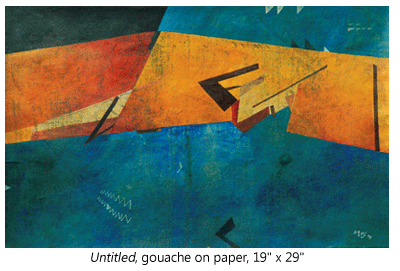- Prelude
- Editorial
- A Conversation with Jagdish Swaminathan
- Seeing is Very Important………
- Tormented Delineations and Violent Deformations
- Bikash Bhattacharjee: Subverting the Seen
- Bridging Western and Indian Modern Art: Francis Newton Souza
- Contesting National and the State: K K Hebbar's Modernist Project
- The Allegory of Return into the Crucial Courtyard
- Knowing Raza
- The Old Story Teller
- Beautiful and Bizarre: Art of Arpita Singh
- Feeling the Presence in Absence! Remembering Prabhakar Barwe
- Waterman's Ideal Fountain Pen
- Peepli Live: the Comic Satire Stripping off the Reality of Contemporary India
- Age of Aristocracy: Georgian Furniture
- Faking It - Our Own Fake Scams
- Scandalous Art and the “Global” Factor
- The Composed and Dignified Styles in Chinese Culture
- Visual Ventures into New Horizons: An Overview of Indian Modern Art Scenario
- The Top, Middle and Bottom Ends
- Top 5 Indian Artists by Sales Volume
- What Happened and What's Forthcoming
- The Month that was
- NESEA : A Colourful Mosaic
- Mumbai Art Sighting
- Art Events Kolkata
- Musings from Chennai
- Art Bengaluru
- Khoj, Kolkata Boat Project
- What a Summit!
- Ganesh Haloi at Art Motif
- The Other Self by Anupam Sud at Art Heritage, New Delhi
- Baul Fakir Utsav at Jadavpur
- Printmaking Workshop
- World's Greatest Never Before Seen Toy and Train Collection
- Previews
- In the News
- Christies: Jewellery Auction at South Kesington, London
ART news & views
Ganesh Haloi at Art Motif
Volume: 3 Issue No: 13 Month: 2 Year: 2011
by Uma Prakash
Haloi's body of paper work on exhibit is colourful and exquisite. The sheer vibrancy of the images exemplifies his easy, fluid motion at its best. Sans human being his paintings have become an intricate narrative of nature in an abstract form.

Born in Jamalpur now in Bangladesh, Haloi (b 1936) moved to Calcutta after the Partition in 1950. Like many of his generation, the artist suffered the anguish of being uprooted from his place of birth which had a deep impact on his work. After graduating from the Government College of Art and Craft in Calcutta he joined the Archaeological Survey of India to make copies of the Ajanta murals. He subsequently taught at the Government College of Art and Craft.
Elements of Ajanta reflected in his work as he continued to paint figures in landscapes but he soon gravitated towards abstraction and through the poetic mix of colour and strong geometrical patterning, he created a new visual vocabulary. His recollection of a world long abandoned took the form of abstract landscapes and his deep link with nature soon became his strong force.
A meticulous abstract recording of nature continues to be his focus, in colours that range from beige to shades of red, blue and green, as he tries to convert natural surroundings into artistic images. Through his elegant mix of colours he manipulates his images with a subtly that reveals the power of nature over time. Being completely one with nature the artist  chooses to use dots, dashes, lines as mysterious signs for trees, water, green fields. He enhances the close link between nature and art. In Untitled 1 the blue stands in contrast to the ochre that gradually moves into shades of rust to create distinct images. The artist plays with the viewer's imagination inviting him to share his intangible vision through his intensity of colour, and textured images.
chooses to use dots, dashes, lines as mysterious signs for trees, water, green fields. He enhances the close link between nature and art. In Untitled 1 the blue stands in contrast to the ochre that gradually moves into shades of rust to create distinct images. The artist plays with the viewer's imagination inviting him to share his intangible vision through his intensity of colour, and textured images.
Abstraction is not as simple as the application of brushwork, technique, texture or colours manipulated by the artist. It is created through mental debate with the artist's experiences, displayed through line and colour as is clear in Haloi's work. One of the most visually stimulating piece is Untitled 4 structured in several vertical panels. Evoking the rhythm and colours associated with nature Haloi uses different shades of green replicating the colours of nature, and adds ochre, red and white to create geometrical abstract configurations that strike the eye and imagination. The artist applies a minimal approach to some of the panels where a single colour whispers its presence.
There is a clear mix of the magical and surreal element in the artist's work, evoking sounds of rustling, ripple, and at times a silence gently capturing the senses of the viewer. In Untitled 3, a major splash of green stands out in contrast to the subtle ochre devising its own story of the land. In contemporary Indian art Haloi's genre of abstraction has created a visual language that makes him one of the most important artists of today.